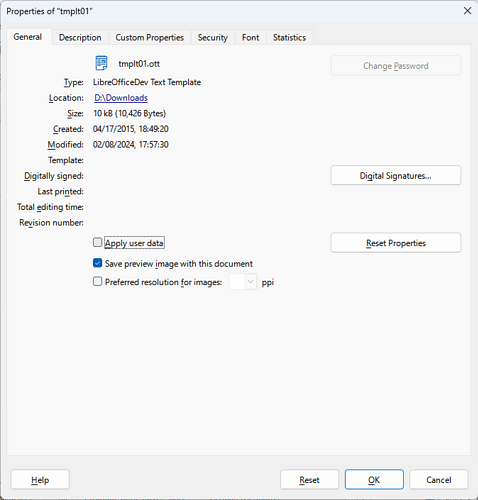To check my thesis I flattened .odt to .fodt then looked for template path in .odt and copied it to clipboard.
<meta:template xlink:type=“simple” meta:date=“2024-02-08T21:03:49.934572131” xlink:href="…/…/…/…/…/…/…/…/…/…/home/userA/Templates/bla/bla/bla/bla/blaaa.ott" xlink:actuate=“onRequest” xlink:title=“PrjA”/>
Then in shell changed working directory to my .odt storage directory and did ls -alh <path from .fodt> which returns with error.
Path found in .fodt starts with quite long sequence of ../'s - in end result path switches to parent directory 10 times before specifying remaining path part literally (which starts with /home).
If to do ls -alh ../../../../../../../../../.. it doesn’t land to the spot in file tree where I expect it to land. Instead of that it lands in /home which is bad because the string in path of literal path specification starts either with /home.
It can be my shifting of template file in past.
I guess TemplateExchange to fix it. Right?

